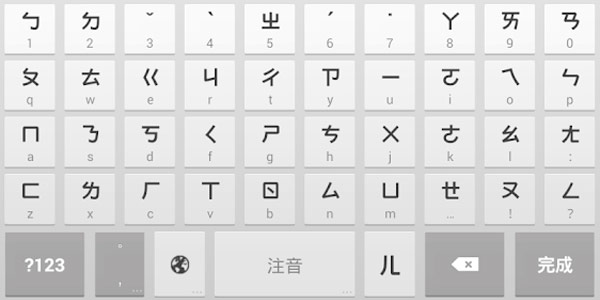When the Republic of China forces retreated to Taiwan in 1949, they took with them a script that had been invented some 35 years earlier on the mainland as a means of simplifying or modernizing traditional Chinese writing.
Zhuyin Fuhao represents one pole, as it were, of the vacillation demonstrated by the Chinese government, past and present, toward their traditional script. On one hand, it is a profound matter of ancestral culture; on the other, it requires a considerable effort of learning and is slower to write than a phonetic script such as an alphabet. (Radiolab has a truly wonderful program on the subject, and Thomas Mullaney’s book is also important.)
Called Zhuyin, Zhuyin Fuhao, Bopomofo or Mandarin Phonetic Symbols, this script was skillfully enough designed (by Zhang Taiyan, also referred to by his alternate name Zang Bingling, who also wrote Wen Shi (文始 “The Origin of Writing”), the first systematic work of Chinese etymology) to be able to transcribe all possible sounds in spoken Mandarin in a mere 37 characters and four tone marks.
The name Bopomofo comes from the first 4 characters on the Taiwanese keyboard of Zhuyin input: bo po mo fo (ㄅㄆㄇㄈ). It was introduced by the Republic of China government’s Commission on the Unification of Pronunciation in 1912-1913, and used alongside a romanized orthography created by Thomas Francis Wade, a British ambassador who was also the first Professor of Chinese at Cambridge, and Herbert Allen Giles, a British diplomat in China and his son Lionel, a curator at the British Museum.
After the Chinese Civil War, the government of the mainland People’s Republic decided to adopt the Hanyu Pinyin as its romanization system and Zhuyin, like the government-in-exile, was limited to Taiwan.
(Somewhat ironically, Zhang Taiyan had by then left the Kuomintang and criticized Chiang Kai-shek. When he died in 1936 he was given a state funeral, and in 1955 the People’s Republic established a museum devoted to him and his works.)
Although Taiwan adopted Hanyu Pinyin as its official romanization system in 2009, Zhuyin is still an official transliteration system there, not only for Mandarin and its many dialects but for Taiwanese Hokkien, and remains widely used as an educational tool and as a way to type Chinese on computers and mobile phones. It is also used to show the Taiwanese pronunciation of characters and to write Taiwanese words for which no characters exist.
Zhuyin is also used as the main phonetic system in teaching reading and writing in elementary school in Taiwan, still fulfilling its original function as a point of entry for those wanting to learn the rich but complex Chinese script.
